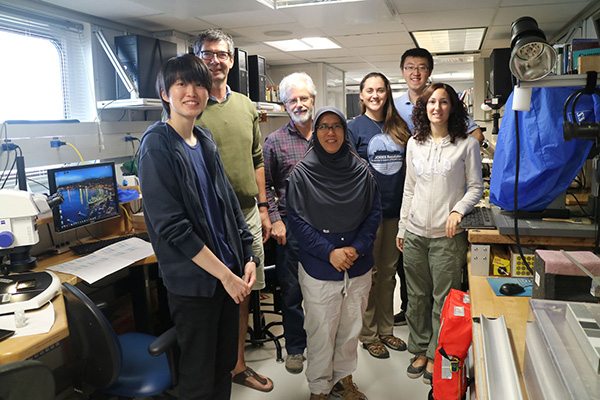
Don’t Let Their Size Fool You : Microfossils

The micropaleontologists collecting sediment samples only need very little to make smear slides to find nannofossils or radiolarians. Washing the foramanifera takes a little longer and they are much bigger, but you can’t just smear them on a slide, they have to be sorted (picked).
Collecting, washing , and sorting foraminifera…



Montserrat holding the core catcher sediment, washing the sediment sample, and picking foraminifera under the microscope.
Micropaleontologist Montserrat collects the core catcher, which comes from the very bottom of the core. Then she washes a small amount through a sieve, after which sediments are dried on a hot plate. Finally the dried samples are “picked” , sorted, and identified. These foraminifera are fossils left behind by the microplankton that died millions of years ago!
Radiolarians have to be approached a bit differently…..

Kaoru making a smear slide and then viewing under the electron microscope
Micropaleontologist Kauro has first use peroxide then hydrochloric acid to dissolve away all the calcareous microfossils from the core catcher sample. She hopes that the silica based radiolarian fossils are left behind when she dries the solution. Finally Kaoru produces a smear for viewing under the microscope.
The smallest fossils are easy to find…..


Jeremy looks for nannofossils floating in water suspension, them makes a smear slide.
Nannopalaeontologist Jeremy looks for the smallest plankton, the coccolithophores. These are easy to find in mud sediments, just smear on a slide, glue on a slide cover, let dry then head over the electron microscope. If the core sample is sandy, then a better way to capture the fossils is to settle out the sand from a water suspension.



Images Plankton Sizes: (large – small) foraminifera, coccolithophore, and radiolaria
Don’t let their small size fool you these tiny plankton give us information about environment, climate, and ocean processes that may have occurred millions of years ago!